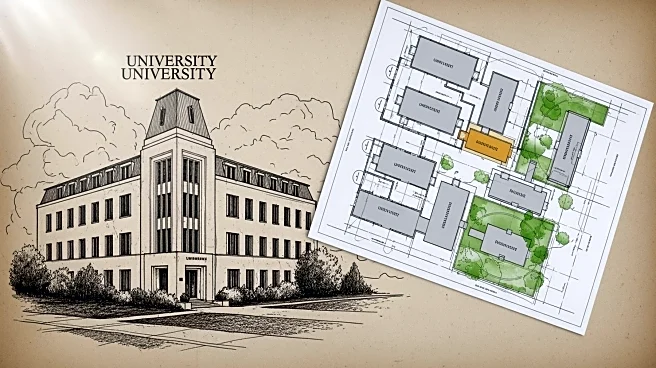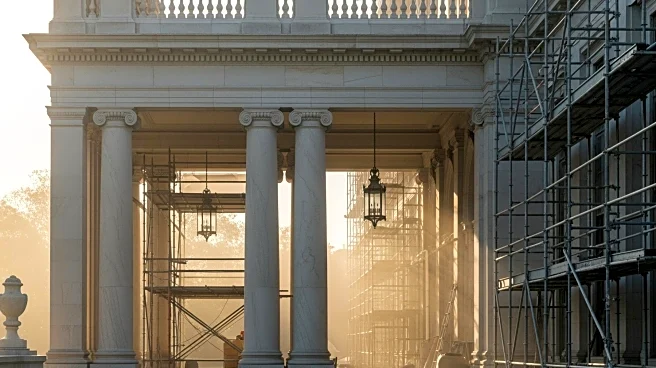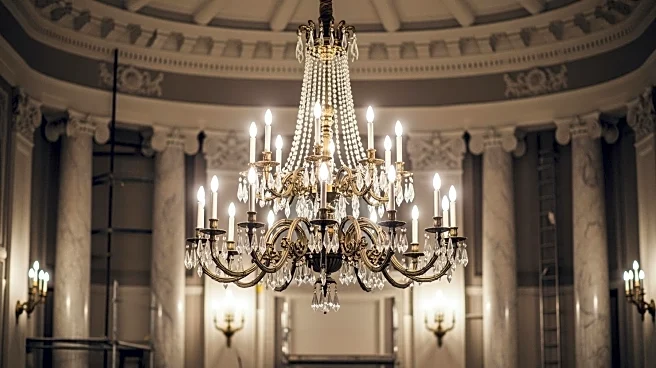What's Happening?
Valparaiso University experienced a significant expansion during the mid-20th century, marked by a building boom that reshaped its campus. This period saw the construction of numerous structures, including
dormitories and academic buildings, driven by a surge in higher education enrollment post-World War II. The GI Bill and a national emphasis on STEM education contributed to this growth. Notable architects like Charles Stade and Michael Hall designed key buildings, including Scheele Hall and the Chapel of the Resurrection, which became iconic examples of midcentury modern architecture. The expansion was part of a broader trend in higher education, with campuses across the U.S. doubling in number between 1963 and 1975.
Why It's Important?
The building boom at Valparaiso University reflects a pivotal era in U.S. higher education, characterized by rapid growth and modernization. This expansion not only accommodated a growing student population but also signified a shift towards more diverse academic offerings and modern architectural styles. The development of large chapels and dormitories was part of a broader effort by Lutheran universities to establish a unique identity while maintaining traditional values. This period of growth had lasting impacts on the university's infrastructure and its ability to attract students, shaping its role in the educational landscape.
What's Next?
As Valparaiso University continues to evolve, the legacy of its mid-20th century expansion remains evident in its campus architecture and layout. Future developments may focus on integrating modern facilities with the existing midcentury structures, ensuring that the university meets contemporary educational needs while preserving its historical identity. The ongoing challenge will be to balance growth with sustainability and heritage conservation, potentially influencing future campus planning and development strategies.
Beyond the Headlines
The architectural choices made during Valparaiso University's expansion reflect broader cultural and educational shifts of the time. The emphasis on modernism and the construction of large chapels highlight a period of transformation in religious and educational institutions, as they sought to adapt to changing societal values while retaining core traditions. This era also underscores the importance of architectural innovation in shaping institutional identity and community engagement.











